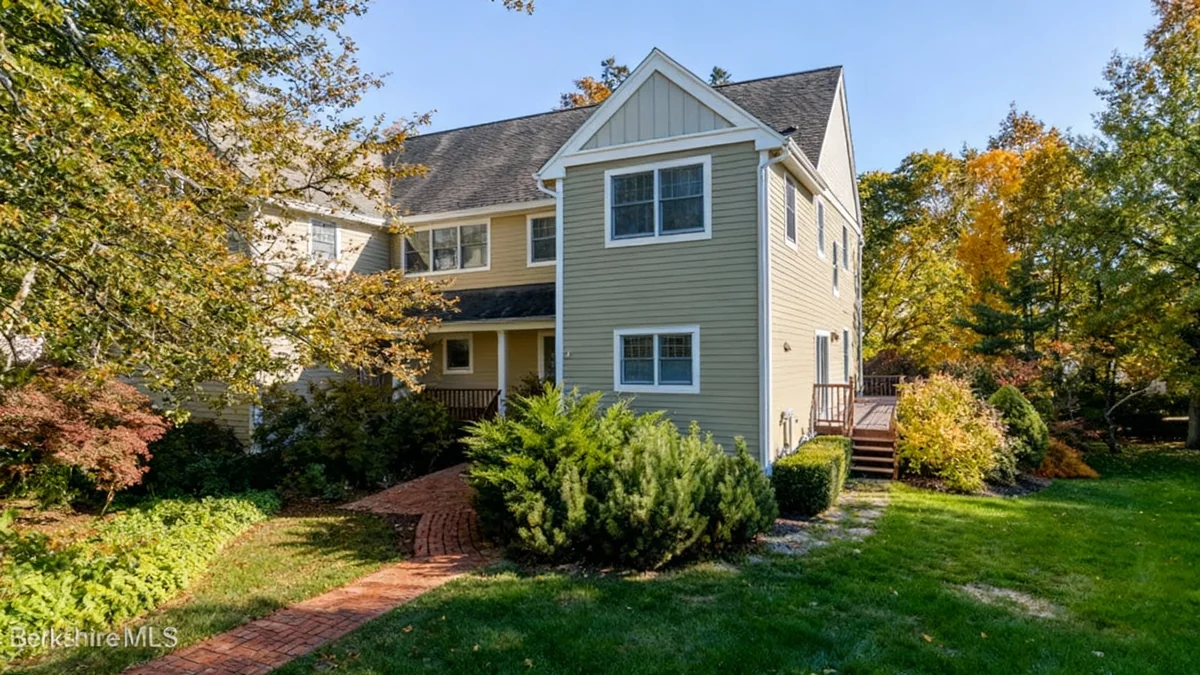In the heart of the Berkshires, a unique architectural challenge has been met, blending two centuries of history with modern living standards. Architect Andrew Webster of Graphite Studio has successfully preserved the character of a 200-year-old building while infusing it with 21st-century performance and comfort, a project that highlights a growing trend in the region's real estate market.
This transformation comes as the broader Berkshire County real estate market shows signs of normalization. After a very strong start to 2025, sales activity for single-family homes began to level off moving into the spring, with market performance varying significantly across different parts of the county.
Key Takeaways
- Architect Andrew Webster successfully modernized a 200-year-old building, focusing on preserving its historic charm.
- The Berkshire County single-family home market saw a strong first quarter in 2025, followed by a flattening in the spring season.
- A new condominium listing at Copper Beach Country Village highlights demand for high-end, convenient living in the area.
- The local business landscape in Lee is changing, with the sale of appetito Pizza & Gelato and plans for a new restaurant concept.
The Challenge of Blending Old and New
For architect Andrew Webster, the project was more than a simple renovation; it was a delicate balancing act. The primary goal was to maintain the soul and aesthetic of a structure that has stood for two centuries while ensuring it could meet the demands of a modern lifestyle.
Webster's team at Graphite Studio focused on integrating contemporary amenities without erasing the building's historical narrative. This involved careful selection of materials, innovative construction techniques, and a deep respect for the original craftsmanship. The result is a space that feels both timeless and current, a testament to thoughtful architectural preservation.
Preservation in a Changing Market
Projects like this are becoming increasingly important in regions like the Berkshires, where historic properties are a key part of the local identity. As the market evolves, the ability to update these older homes for new generations of buyers is crucial for maintaining property values and community character.
This type of transformation appeals to a specific segment of buyers who desire character and history but are unwilling to compromise on modern comforts like energy efficiency, updated plumbing, and high-tech integrations.
A Look at the Current Real Estate Market
The architectural project unfolds against a backdrop of a shifting regional real estate market. Data from the first half of 2025 indicates a market in transition. While sales of single-family homes were robust in the first quarter, the pace slowed as spring arrived.
This flattening suggests a market that is moving away from the frenetic pace of recent years and toward a more sustainable equilibrium. However, conditions are not uniform across the region. Certain towns and neighborhoods continue to see strong demand and competitive bidding, while others are experiencing a more pronounced slowdown.
Market Snapshot: First Half 2025
- First Quarter: Very strong sales volume for single-family residential homes.
- Spring Market: A noticeable flattening of sales activity.
- Regional Variation: Market performance differs significantly depending on the specific area within Berkshire County.
This variability indicates that local factors, such as school districts, amenities, and inventory levels, are playing a larger role in driving sales than broad, county-wide trends.
High-End Offerings Signal Confidence
Despite the market's moderation, high-end properties continue to attract attention. A notable new listing is a condominium in the rarely available Copper Beach Country Village, offered by Tim Lovett of Compass. This property exemplifies the demand for gracious, low-maintenance living in a convenient location.
The availability of such properties indicates that there is still strong confidence in the premium segment of the Berkshire market. Buyers are seeking quality, location, and lifestyle, and are willing to invest in properties that offer a complete package.
Shifts in the Local Business Landscape
The real estate market is intrinsically linked to the health of the local economy, and recent changes in the town of Lee's business district reflect this dynamic. The popular Italian eatery appetito Pizza & Gelato on Main Street has been sold, signaling a new chapter for the prominent location.
The buyer is the team behind Juju’s, a well-established restaurant in Great Barrington known for its unique offerings. They plan to open a second location in the former appetito space, bringing a new concept to Lee's Main Street. The new establishment will reportedly feature some of Juju's signature items, including its popular popcorn chicken and soft-serve ice cream, along with what they promise will be "a damn good slice" of pizza.
"The new concept will feature iconic popcorn chicken, soft serve ice cream, and ‘a damn good slice.’"
This transition is a significant development for Lee's dining scene. While the closure of a beloved local spot like appetito is an adjustment for the community, the arrival of a successful brand like Juju’s brings anticipation and the promise of new energy to the downtown area. It demonstrates continued investor interest in the region's commercial real estate and service industries.
Community Engagement and Future Outlook
Beyond real estate and business, community initiatives continue to shape the Berkshires. In Lee, supporters are preparing to boost the opening of a new NinjaFit playground with a lateral pull-up contest, showcasing a community-driven effort to enhance public spaces.
Simultaneously, the town is addressing infrastructure needs with a major $6.8 million replacement planned for the Mill Street bridge. This project, along with ongoing discussions about safety and monitoring measures related to the UDF site preparation plans, shows a town actively planning for its future safety and growth.
These developments, from the meticulous renovation of a historic building to shifts in the housing market and local commerce, paint a picture of a region in dynamic evolution. The Berkshires continue to be a place where history is valued, the market is adapting, and the community is actively invested in its future.





